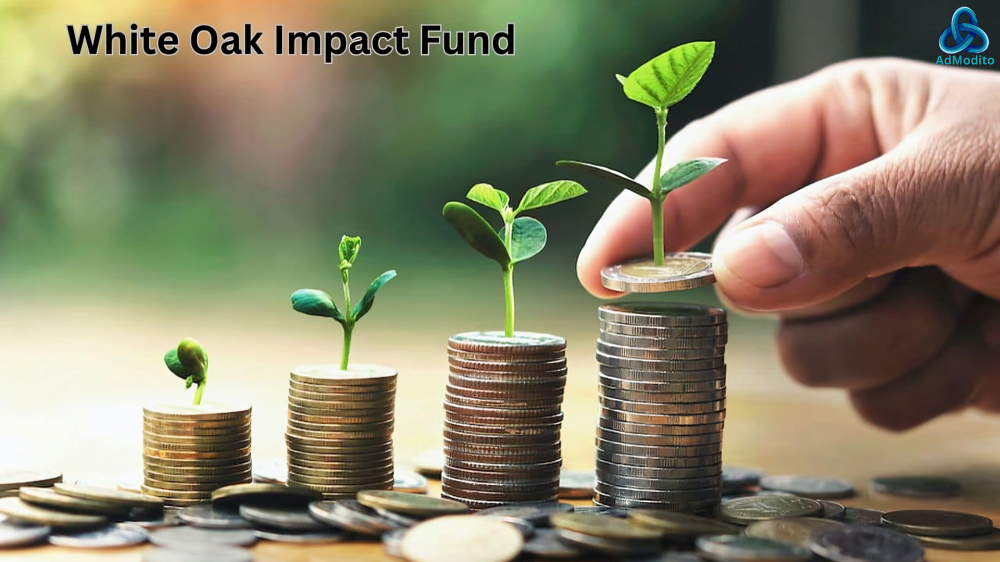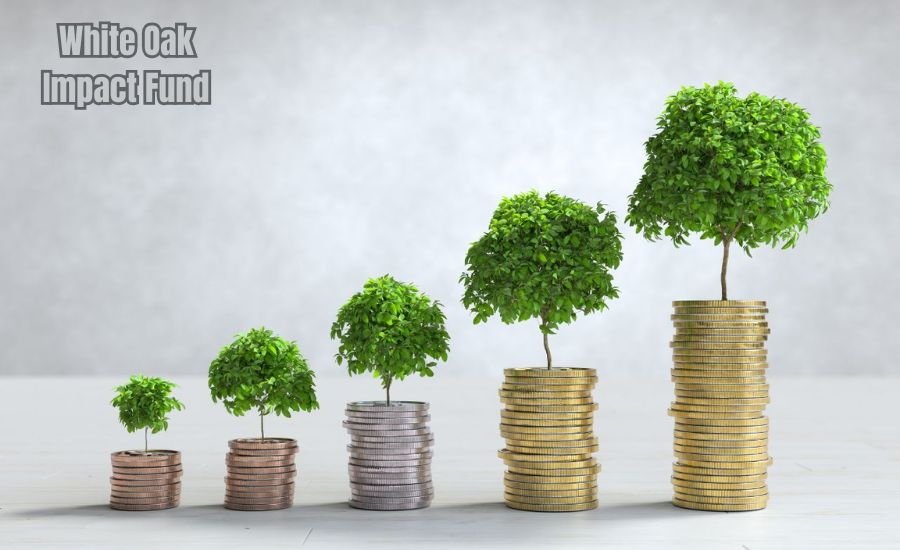Introduction to the White Oak Impact Fund
The White Oak Impact Fund is a forward-looking investment initiative designed to bridge the gap between profitability and sustainability. Its core mission is to generate attractive financial returns while making a measurable positive impact on the environment and society. In an era where investors are increasingly prioritizing ethical and sustainable practices, the fund serves as a beacon for those seeking to align their financial investments with their values.
At the heart of the White Oak Impact Fund lies a vision that recognizes the interconnectedness of financial growth and social responsibility. The fund carefully selects investment opportunities that not only promise financial rewards but also contribute to sustainable development and social equity. This dual focus positions the White Oak Impact Fund as a vital player in the evolving landscape of impact investing, which has gained significant traction among investors who wish to see their money work for the greater good.
The importance of impact investing cannot be overstated, particularly in today’s financial climate where traditional investment paradigms are being challenged. Investors are not merely seeking higher returns; they are also concerned about the environmental and social implications of their choices. The White Oak Impact Fund addresses this concern by implementing strategies that prioritize long-term impact over short-term gains. By doing so, the fund demonstrates that it is possible to achieve significant financial objectives while also fostering a sustainable future.
As we explore the operational strategies and specific projects funded by the White Oak Impact Fund, it becomes clear that this initiative is setting a new standard for responsible investing. The fund aims to create a lasting legacy that goes beyond mere profit; it strives to leave an indelible mark on communities and ecosystems worldwide.
The Philosophy Behind Impact Investing

Impact investing represents a transformative approach to finance, where the quest for financial returns is complemented by a commitment to creating positive social and environmental impacts. The White Oak Impact Fund embodies this philosophy, aiming to harness capital to address pressing societal challenges while also achieving competitive financial performance. Central to this philosophy is the notion of responsible investing, which prioritizes investments not only on their potential for profit but also on their ability to contribute to sustainable and equitable development.
At the core of the White Oak Impact Fund’s strategy is the integration of ESG (Environmental, Social, and Governance) criteria into investment decisions. This analytical framework assesses companies based on their environmental practices, social responsibility, and governance structures. By evaluating these factors, the fund seeks to identify investments that not only promise financial returns but also align with broader societal goals. This dual focus is essential as it helps mitigate risks related to sustainability and ethical practices, thus promoting long-term value creation.
Moreover, the White Oak Impact Fund recognizes the interconnectedness of financial and social performance. Investments are made in sectors that are expected to thrive whilst fostering improvements in quality of life, community resilience, and environmental stewardship. By actively seeking out opportunities that deliver both impact and performance, the fund exemplifies the principle that financial and social objectives can be mutually reinforcing rather than opposing forces. Ultimately, the philosophy behind impact investing, as championed by the White Oak Impact Fund, is about reimagining the role of capital in addressing the global challenges of our time.
Key Areas of Investment Focus

The White Oak Impact Fund strategically invests in various sectors that promote sustainable development and social equity. One of the primary areas of focus is renewable energy. This sector encompasses investments in solar, wind, and other clean energy technologies that aim to reduce dependency on fossil fuels while promoting environmental sustainability. For instance, projects like solar farms in underserved communities not only generate clean energy but also create jobs and enhance local economies.
Another critical area for investment is affordable housing. The White Oak Impact Fund recognizes the pressing need for safe and accessible housing options for low and moderate-income families. Investments in this sector often lead to the construction of multi-family housing developments and the rehabilitation of existing properties. These initiatives not only provide homes but also foster stable communities, ensuring that individuals have a secure place to live and thrive.
Sustainable agriculture is also a key focus. The fund supports initiatives designed to promote farming practices that are environmentally friendly and economically viable. By funding projects such as organic farms, community gardens, and innovative agricultural technologies, the White Oak Impact Fund helps ensure food security while promoting better land management practices. These investments enhance local food systems, making fresh produce available to communities that might otherwise lack access.
Lastly, community development plays an integral role in the White Oak Impact Fund’s projects. Investments in this area are aimed at economic revitalization, infrastructure improvements, and local business development. By supporting initiatives like co-working spaces and local business incubators, the fund fosters entrepreneurship and drives economic growth in underserved areas. The diversity of sectors targeted for investment showcases the comprehensive approach of the White Oak Impact Fund towards achieving long-term positive impacts in society.
Investment Strategies and Approach

The White Oak Impact Fund employs a comprehensive range of investment strategies designed to achieve sustainable growth while adhering to its impact objectives. Central to these strategies is a rigorous due diligence process, ensuring that each potential investment aligns with both financial and ethical standards. This process involves evaluating the economic viability of the projects and their ability to drive positive social or environmental outcomes. By utilizing a blend of qualitative and quantitative analysis, the fund identifies opportunities that not only promise returns but also contribute meaningfully to sustainability goals.
In terms of portfolio management, the White Oak Impact Fund adopts a tailored approach that balances diversification with a focus on high-impact sectors. This strategy allows for the mitigation of risk while capitalizing on unique opportunities within renewable energy, sustainable agriculture, and affordable housing, among other areas. The fund actively monitors and adjusts its portfolio to reflect changing market conditions and emerging opportunities, ensuring that investments not only meet financial benchmarks but also uphold the fund’s mission for impactful change.
Another key element of the fund’s strategy pertains to the balance of risk and return. While traditional investment models may prioritize financial gains, the White Oak Impact Fund emphasizes the importance of aligning financial success with social responsibility. By implementing advanced risk assessment techniques, the fund is able to optimize its investments to achieve favorable financial outcomes without compromising its commitment to sustainable impact. This holistic strategy underscores the fund’s dedication to reimagining the investment landscape, where profitability and positive influence coexist harmoniously. Ultimately, the White Oak Impact Fund exemplifies a progressive approach to responsible investing that prioritizes both community benefit and fiscal prudence.
Performance Metrics and Impact Measurement

Measuring the performance and social impact of the White Oak Impact Fund requires a multifaceted approach that incorporates both quantitative and qualitative metrics. The fund employs a variety of methodologies and assessment tools designed to evaluate its effectiveness in promoting sustainable investment while achieving financial returns. These frameworks are essential for understanding how investments align with the fund’s objectives of generating positive social and environmental outcomes alongside traditional financial performance.
One key component of the White Oak Impact Fund’s performance evaluation is the use of rigorous financial metrics. These include standard measures such as internal rate of return (IRR), cash-on-cash returns, and net asset value (NAV). By utilizing these financial indicators, the fund can ascertain its profitability and operational efficiency. However, financial metrics alone do not capture the full scope of the fund’s impact. Consequently, the fund integrates social return on investment (SROI) analysis, which quantifies the social benefits generated by investments in relation to costs incurred. This dual approach allows the fund to assess the trade-offs between financial viability and social impact effectively.
In addition to quantitative metrics, qualitative assessments also play a critical role. The White Oak Impact Fund conducts stakeholder interviews, case studies, and narrative evaluations to capture the real-world effects of its investments. These qualitative insights complement numerical data, offering a richer perspective on how investments affect communities and the environment. Furthermore, the fund applies various benchmarking techniques against industry standards and peers to establish relative performance metrics. By adopting this comprehensive evaluation framework, the White Oak Impact Fund systematically measures its success in fulfilling its mission of sustainable investing, ensuring accountability and transparency while contributing to social good.
Success Stories and Case Studies

The White Oak Impact Fund has catalyzed numerous initiatives that reflect its commitment to fostering sustainable development while addressing social and environmental challenges. One notable example is the funding of a renewable energy project aimed at providing solar power to underprivileged communities. This initiative not only reduced energy costs but also significantly decreased carbon emissions, showcasing the fund’s dual focus on social equity and environmental sustainability. By leveraging private capital for these kinds of projects, the White Oak Impact Fund demonstrates the potential for meaningful change via strategic investments.
Another exemplary case is the support given to a local sustainable agriculture program focused on improving food security in urban areas. This initiative provided training and resources to low-income families, empowering them to grow their own food. As a result, the community witnessed a substantial increase in access to fresh produce, which fostered healthier eating habits and reduced reliance on processed foods. The success of this program exemplifies how the White Oak Impact Fund effectively addresses pressing social issues, while simultaneously promoting sustainable practices.
The fund has also been instrumental in supporting educational initiatives that promote environmental stewardship among youth. A specific case is the funding of an outdoor education program which has inspired thousands of students to engage with nature and understand the importance of conservation. This initiative not only nurtures the next generation of environmental leaders but also strengthens community ties through shared experiences in nature.
These success stories highlight the ongoing positive impact of the White Oak Impact Fund on communities and the environment. They illustrate that by investing in sustainable initiatives, the fund is facilitating long-lasting changes that benefit both people and the planet. The tangible benefits derived from these projects serve as a testament to the effectiveness of the fund’s approach to sustainable investing.
Challenges and Opportunities in Impact Investing
Impact investing has emerged as a compelling avenue for aligning financial returns with social and environmental benefits. However, it is not without its challenges. The White Oak Impact Fund, like many other entities in the impact investing sector, grapples with a variety of obstacles that can hinder its mission. One of the primary challenges is the measurement of impact. Unlike traditional investing, where financial metrics are clear-cut, evaluating the social and environmental outcomes of investments necessitates sophisticated methodologies that are often still in development. This lack of standardization can lead to skepticism among potential investors and hinder the fund’s ability to attract the necessary capital to further its objectives.
Another challenge is balancing financial returns with meaningful impact. Investors often seek competitive returns on their investments, which can risk prioritizing short-term financial gains over long-term positive outcomes. Moreover, the landscape of impact investing is often viewed as niche, which may deter mainstream investors wary of perceived risks associated with this approach. However, the White Oak Impact Fund can leverage these challenges as opportunities for growth and innovation. By developing robust metrics that clearly demonstrate impact, the fund can build credibility and attract a broader investor base. Furthermore, education and outreach can play a vital role in dispelling common misconceptions about impact investing, showcasing its potential to deliver both financial returns and social good.
Additionally, collaboration with other stakeholders in the impact investing ecosystem, such as nonprofits, government bodies, and academic institutions, can pave the way for innovative solutions to pressing societal challenges. By fostering partnerships and sharing best practices, the White Oak Impact Fund can navigate obstacles while simultaneously exploring avenues for expansion and enhanced impact. These efforts not only strengthen the fund’s position but also contribute to the overall growth of the impact investing sector.
The Role of Stakeholders in the Impact Ecosystem

The ecosystem surrounding the White Oak Impact Fund is characterized by the collaboration of various stakeholders, each contributing vital roles to promote sustainable investing. The primary stakeholders involve investors, community members, government entities, and nonprofit organizations, all of whom work together to facilitate impactful initiatives that benefit both the community and the environment.
Investors play a crucial role in the White Oak Impact Fund, providing the necessary capital required to support impactful projects. Their investment decisions are often influenced by the promise of social responsibility and ethical returns. By aligning their financial goals with positive social outcomes, investors become proactive participants in the impact investing space, enabling initiatives that address pressing social issues such as climate change, poverty alleviation, and education reform.
Community members, on the other hand, are direct beneficiaries of the projects financed through the White Oak Impact Fund. Their involvement ensures that the initiatives are tailored to meet local needs and create sustainable benefits. Community engagement fosters a sense of ownership, accountability, and transparency, making it essential for the success of any project. Moreover, their feedback can inform adjustments and improvements, enhancing the overall effectiveness of the fund’s investments.
Government entities are pivotal in creating an enabling environment for impact investing. They provide regulatory frameworks, incentives, and support mechanisms that encourage collaboration among stakeholders. By establishing partnerships with both funders and recipients, government organizations can bolster the legitimacy of initiatives under the White Oak Impact Fund, ensuring that policies support community development and sustainability goals.
Lastly, nonprofit organizations serve as vital partners within the impact ecosystem. They often have extensive experience and deep roots in the communities they serve, allowing them to advocate for local interests and mobilize resources effectively. Their expertise in project implementation and monitoring helps maintain accountability and measure the impact of investments made through the White Oak Impact Fund, ensuring that the intended outcomes are achieved.
Through the collaborative efforts of these stakeholders, the White Oak Impact Fund can successfully drive meaningful change, enhancing the potential for sustainable development and improving lives in communities across the area.
Future Outlook: Where is the White Oak Impact Fund Heading?
The White Oak Impact Fund is positioned at the forefront of sustainable investing, and its future outlook is promising as it continues to evolve and adapt to the ever-changing landscape of finance and societal needs. As awareness of environmental, social, and governance (ESG) issues intensifies, the fund is expected to deepen its commitment to impactful investments. This strategic focus aligns with global movements toward sustainable development and responsible capital allocation.
One potential development for the White Oak Impact Fund lies in expanding its investment portfolio to include emerging sectors that promote sustainability, such as renewable energy, sustainable agriculture, and green technology. By identifying and investing in innovative companies within these industries, the fund can enhance its influence on furthering sustainable practices while aiming for significant financial returns. Moreover, the integration of advanced analytics and data-driven decision-making will likely play a pivotal role in optimizing investment strategies, ensuring that the fund remains agile in responding to market shifts.
Additionally, the White Oak Impact Fund may look to increase collaboration with other investors and organizations focused on social impact. By forming strategic partnerships, the fund can share insights, mobilize resources, and amplify its efforts in creating tangible change. Engaging with stakeholders and communities will also be critical in ensuring that investment decisions resonate with societal needs and values.
As regulatory frameworks regarding sustainable and responsible investing evolve, the White Oak Impact Fund is anticipated to stay ahead of the curve, becoming a leader in compliance and best practices. This proactive approach will not only enhance the fund’s reputation but also provide investor confidence in its ability to navigate regulatory challenges.
In conclusion, the White Oak Impact Fund is set on a trajectory that capitalizes on emerging opportunities while upholding its mission of driving positive social and environmental outcomes. By focusing on sustainable and impactful investments, the fund is well-equipped to meet the expectations of a conscious investor base in the years to come.







